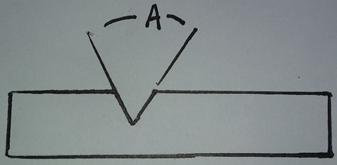This set of Aerospace Materials and Processes Multiple Choice Questions & Answers (MCQs) focuses on “Impact Test – Izod Test”.
1. What is an impact test?
a) Fixing a specimen in the machine to be broken by weight or heavy pendulum
b) Indenting with the help of a diamond hammer
c) Rolling with steel
d) Dipping in a mixture of ethanol and carbon and checking indentation of a material
View Answer
Explanation: An impact test is a procedure that involves notching a specimen on one side and fastening it to a machine to be broken, either by a swinging pendulum that is heavy or by a falling weight on it.
2. The impact tests can be used to _____________
a) find out the absolute value of a material
b) to determine the tensile strength of a material
c) compare two specimens of similar composition and tensile strength
d) to find the quantity of material
View Answer
Explanation: The impact test can be used to compare two specimens that have a similar composition and tensile strength. It has no absolute value. The test used to determine the tensile strength of a material is the tension test.
3. What is the principal use of the impact tests?
a) To determine ductility
b) To determine if the material has been subjected to heat treatment
c) To prevent material from corroding
d) To obtain absolute values
View Answer
Explanation: The principal or main reason that the impact test is conducted upon a material is to ascertain if the material has undergone the required accurate heat treatment. The experiment gives no absolute value.
4. The impact test of a material determines the shock resistance.
a) True
b) False
View Answer
Explanation: The statement is not true as the impact test does not determine the shock resistance of the particular material. The impact test can indicate if the material is extremely brittle. It also tells us if a material has undergone the right heat treatment or not.
5. On _________ materials, impact test cannot be conducted.
a) steel
b) solid
c) room temperature
d) extremely ductile
View Answer
Explanation: The impact test cannot be conducted in the required way on materials that are extremely ductile. This is due to the fact that these types of materials bend while breaking. The experiment can be conducted in room temperature.
6. In an Izod test after the pendulum is released from a certain height, it hits the material at the __________ point of it’s path.
a) lowest
b) opposite
c) highest
d) sideways
View Answer
Explanation: In an Izod test, the material is first notched. Then it is clamped in heavy jaws, where the notch level is with the top and facing the pendulum. After the pendulum is released from a certain height, it hits the material at the lowest point of its path.
7. What is the angle ‘A’ (notch) in the following figure of the Izod test specimen?

a) 60°
b) 30°
c) 45°
d) 90°
View Answer
Explanation: ‘A’ is called the notch angle of a specimen. In an Izod test, the notch angle is 45°. The angle of the notch is an important factor in determining the reaction a material shows when the test is done on it.
8. The impact test value of a material changes with material.
a) True
b) False
View Answer
Explanation: The impact test value can change with change in temperature. For example, consider an impact test conducted at a low temperature. The impact test value decreases. Hence with a decrease in temperature, the impact energy is reduced.
9. If in an old test, energy absorbed (obtained on the scale) is 34 J and cross-section area of the notch is 10×8 mm square. What is the impact strength of the material?
a) 34 J per mm square
b) 4.25 J per mm square
c) 0.425 J per mm square
d) 80 J per mm square
View Answer
Explanation: Formula for impact strength = \(\frac{Energy \,absorbed}{Cross-section \,area \,of \,notch}\)
= \(\frac{34}{10×8}\)
= 0.425 J per mm square.
10. The higher the impact value of the material __________ its toughness value.
a) lower
b) double
c) half
d) higher
View Answer
Explanation: The higher the impact value of a material, higher is its toughness value. The toughness of a material is its capacity to absorb energy and deform without fracturing. It corresponds with the impact energy of a material.
Sanfoundry Global Education & Learning Series – Aerospace Materials and Processes.
To practice all areas of Aerospace Materials and Processes, here is complete set of 1000+ Multiple Choice Questions and Answers.
If you find a mistake in question / option / answer, kindly take a screenshot and email to [email protected]
- Check Aerospace Engineering Books
- Practice Aeronautical Engineering MCQs
- Practice Aerospace Engineering MCQs
- Check Aeronautical Engineering Books
- Check Aerospace Materials Books
